by hankinslawrenceimages | Dec 7, 2009 | Flowers, Wildflowers
A little over a year ago, I posted several photographs of Butterflyweed. I’d photographed it in Florida and at a local botanical garden. This past summer, I found some spectacular Butterflyweed growing at Crabtree Meadows along the Blue Ridge Parkway in North Carolina.
The butterflyweed (asclepias tuberosa) I found this year was much larger that the ones I found last year. There was a great deal of butterfly weed in the meadow I was photographing at in mid-July.
This first photo shows several stalks of butterflyweed growing together.

(c) 2009 Patty Hankins
A side view of one of the clusters of flowers. I love the shape of the butterflyweed flower.
 (c) 2009 Patty Hankins
(c) 2009 Patty Hankins
And finally two close up photos of a group of flowers. I’m still trying to decide which of these two compositions I prefer.
 (c) 2009 Patty Hankins
(c) 2009 Patty Hankins
 (c) 2009 Patty Hankins
(c) 2009 Patty Hankins
The bright orange flowers of the butterflyweed always look so cheerful. I can’t wait to see more of it next summer.
by hankinslawrenceimages | Dec 5, 2009 | Asteraceae Family, Flowers
When I visited the Chrysanthemum show at Longwood Gardens this fall, I was amazed at all the varieties of mums that were on display. As I explored the exhibit, I learned that there are thirteen bloom forms of chrysanthemums.
One of my favorites is the Spider Mums. According to the classification system of the National Chrysanthemum Society “Spiders have long tubular ray florets which may coil or hook at the ends. The florets may be very fine to course.”
At Longwood Gardens, I photographed three varieties of spider chrysanthemums. The first is a wonderful bright yellow Golden Splendour Spider Chrysanthemum.

(c) 2009 Patty Hankins
The Golden Splendour Chrysanthemums were growing in groups in the conservatory when I visited. The groupings of the these large yellow flowers were magnificent.
 (c) 2009 Patty Hankins
(c) 2009 Patty Hankins
The flowers were as interesting from the side as they were from above. This next photo shows the incredible three dimensional look of the flowers.
 (c) 2009 Patty Hankins
(c) 2009 Patty Hankins
The second variety of spider chrysanthemum that I photographed was a Descano Spider Chrysanthemum. I wasn’t very happy with most of my photos of the Descano flowers. The red, orange and yellow colors in the blossoms were incredible. The one photo that I am happy with is this close up that shows the intricate detail and texture of the flower.
 (c) 2009 Patty Hankins
(c) 2009 Patty Hankins
The third variety of spider mum I photographed was an unnamed purple variety. I love the way these flowers look in a group.

(c) 2009 Patty Hankins
 (c) 2009 Patty Hankins
(c) 2009 Patty Hankins
I hope Longwood Gardens has another chrysanthemum show next year, I really would like to photograph more varieties of spider mums.
by hankinslawrenceimages | Dec 2, 2009 | Flowers, Wildflowers
Last February, I spent some time in Florida photographing wildflowers. In several places I photographed what looked like a blade of grass that split at the top into a white flower. With a little research, I discovered that what I was photographing was Starrush Whitetop (Rhynchospora colorata), a member of the sedge family.
Starrush Whitetop is a perennial that blooms year round in Florida. It has between three and seven white bracts which are tipped with green. There are small white flowers in the center of the bracts.
I first photographed the Starrush Whitetop at the Florida Panther National Wildlife Refuge.

(c) 2009 Patty Hankins
I next photographed it at Big Cypress National Preserve.
 (c) 2009 Patty Hankins
(c) 2009 Patty Hankins
 (c) 2009 Patty Hankins
(c) 2009 Patty Hankins
And finally some dried out starrush whitetop at Everglades National Park.
 (c) 2009 Patty Hankins
(c) 2009 Patty Hankins
by hankinslawrenceimages | Nov 30, 2009 | Asteraceae Family, Flowers, Photo Locations
I recently had a chance to check out the Chrysanthemum Festival at Longwood Gardens. The show was up for just over a month in October and November. In addition to all sorts of wonderful varieties of chrysanthemum plants in around the Conservatory, there were some absolutely spectacular chrysanthemum displays.
First was the 1000 Bloom Chrysanthemum. With over 700 blossoms growing on one stem, this year’s 1000 bloom chrystanthemum is the largest ever grown at Longwood Gardens and is the largest in the United States.
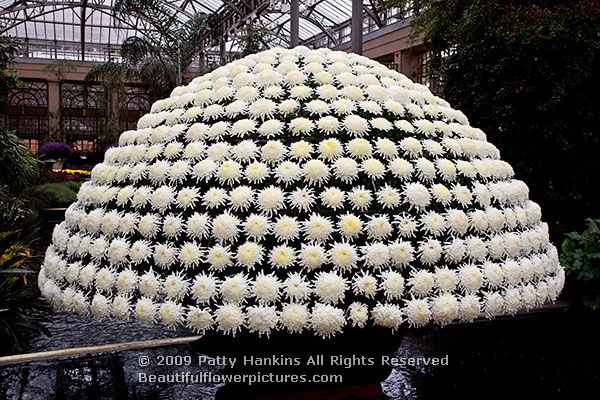
(c) 2009 Patty Hankins
There were also two smaller 1000 Bloom Chrysantemums on display this year – each with over 500 blossoms growing on one stem.
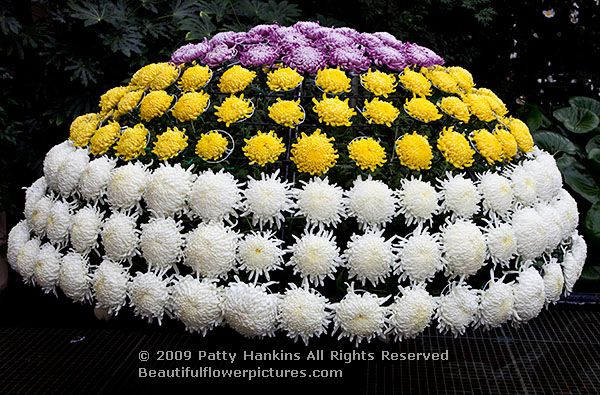
(c) 2009 Patty Hankins
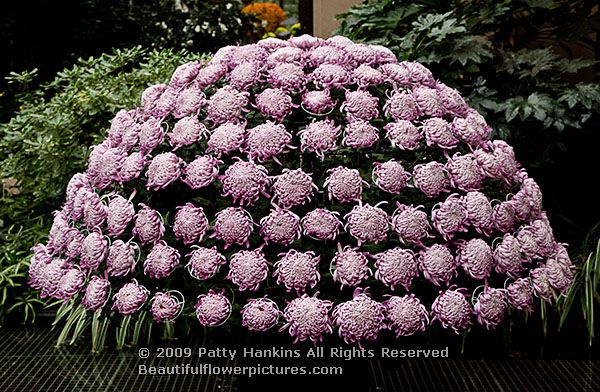 (c) 2009 Patty Hankins
(c) 2009 Patty Hankins
There was also a Chrysanthemum Shield with 172 blossoms growing from one stalk. Longwood’s garden staff learned the technique for growing the shield chrysanthemum a Japanese chrysanthemum grower – Mr. Tadashi Imafuku.
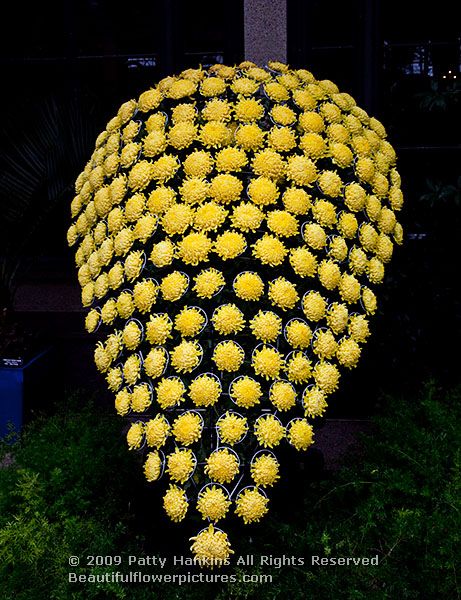 (c) 2009 Patty Hankins
(c) 2009 Patty Hankins
And then there were the Chrysanthemum Trees in front of the Music Room. Longwood’s Garden staff designed this display using Cherry Trees that were scheduled to be composted and chrysanthemums grown in a curtain style.
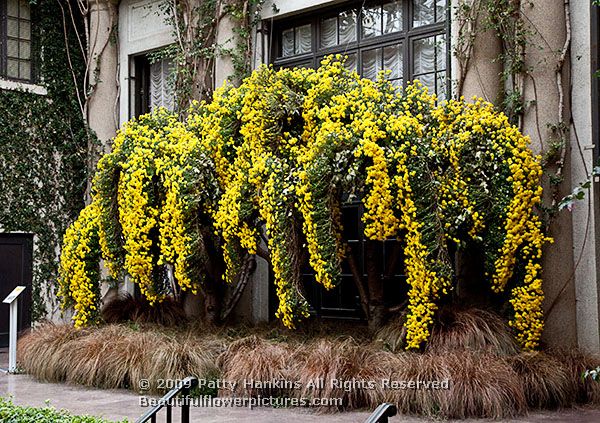 (c) 2009 Patty Hankins
(c) 2009 Patty Hankins
The final set of decorations that I just had to photograph were the giant bees suspended around the main part of the Conservatory. Throughout 2009, Longwood Gardens has been running an educational program on The Buds and the Bees, Pollination and Secret Lives of Plants. The giant bees in the Conservatory were a great reminder of how important bees and pollination are in nature.
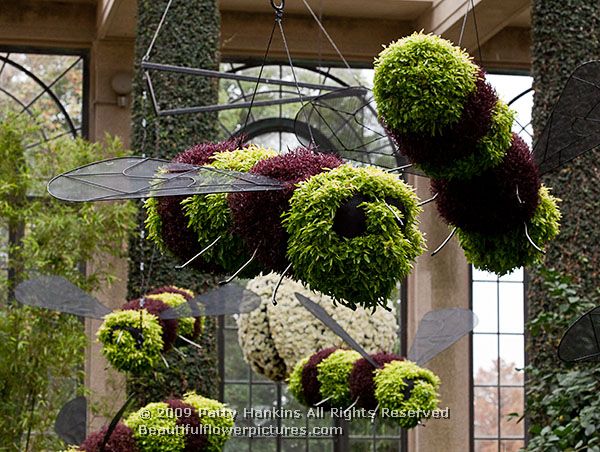
(c) 2009 Patty Hankins
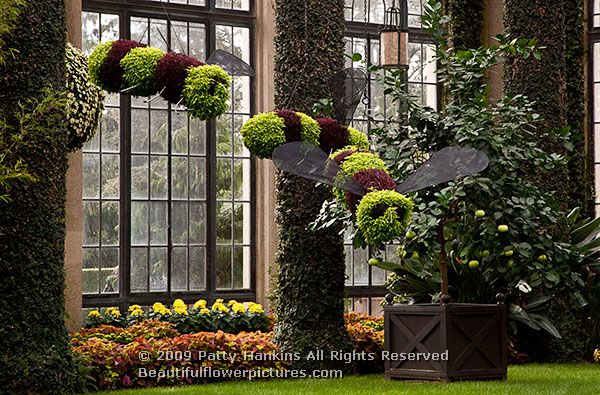 (c) 2009 Patty Hankins
(c) 2009 Patty Hankins
by hankinslawrenceimages | Nov 28, 2009 | Flowers
One flower that I have been hoping to take some great photographs of is the Bird of Paradise (Strelitzia Reginae). I’ve taken many photos of Bird of Paradise at various botanical gardens, but until recently, hadn’t managed any photos that I was really happy with.
While visiting Longwood Gardens in October, I photographed the Bird of Paradise flowers in the Conservatory. I was surprised to see what looked like two flowers growing from one stalk since I’d never seen them growing like that before.

(c) 2009 Patty Hankins
About a month later, I returned to Longwood Gardens – and finally took some pretty spectacular photos of the Bird of Paradise flowers. There were several plants that had multiple flowers on a one stem. I spoke with one of the gardening staff and at Longwood – and she showed me several of the twin flowering plants. The staff at Longwood Gardens is wonderful – they’re always happy to answer questions about what they’re growing.
 (c) 2009 Patty Hankins
(c) 2009 Patty Hankins
I then took several photographs of individual Bird of Paradise flowers. I don’t ever recall seeing so many of these flowers in such great condition.

Bird of Paradise I (c) 2009 Patty Hankins
 (c) 2009 Patty Hankins
(c) 2009 Patty Hankins
Having finally gotten the type of photograph I’ve been wanting to create – I tried photographing the flowers from different angles. Here’s one close in photo showing the intricate details of the petals.
 (c) 2009 Patty Hankins
(c) 2009 Patty Hankins
And finally – my favorite photograph of the Bird of Paradise flower. This blossom was growing quite low to the ground compared to most of the other ones. So I tried photographing it from above. I love the way the petals resemble the flames on a torch – or the feathers of a bird.

Bird of Paradise II (c) 2009 Patty Hankins
I hope you’ve enjoyed seeing the photographs of the Birds of Paradise flowers as much as I enjoyed photographing them. While I’m sure I”ll take more photographs of this flower in the future, I’m not sure I’ll take photos that I like more than the ones I’ve taken recently.


























